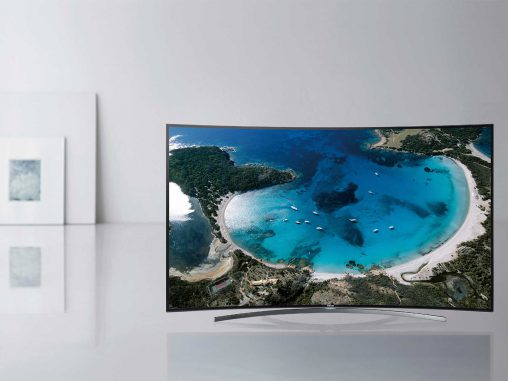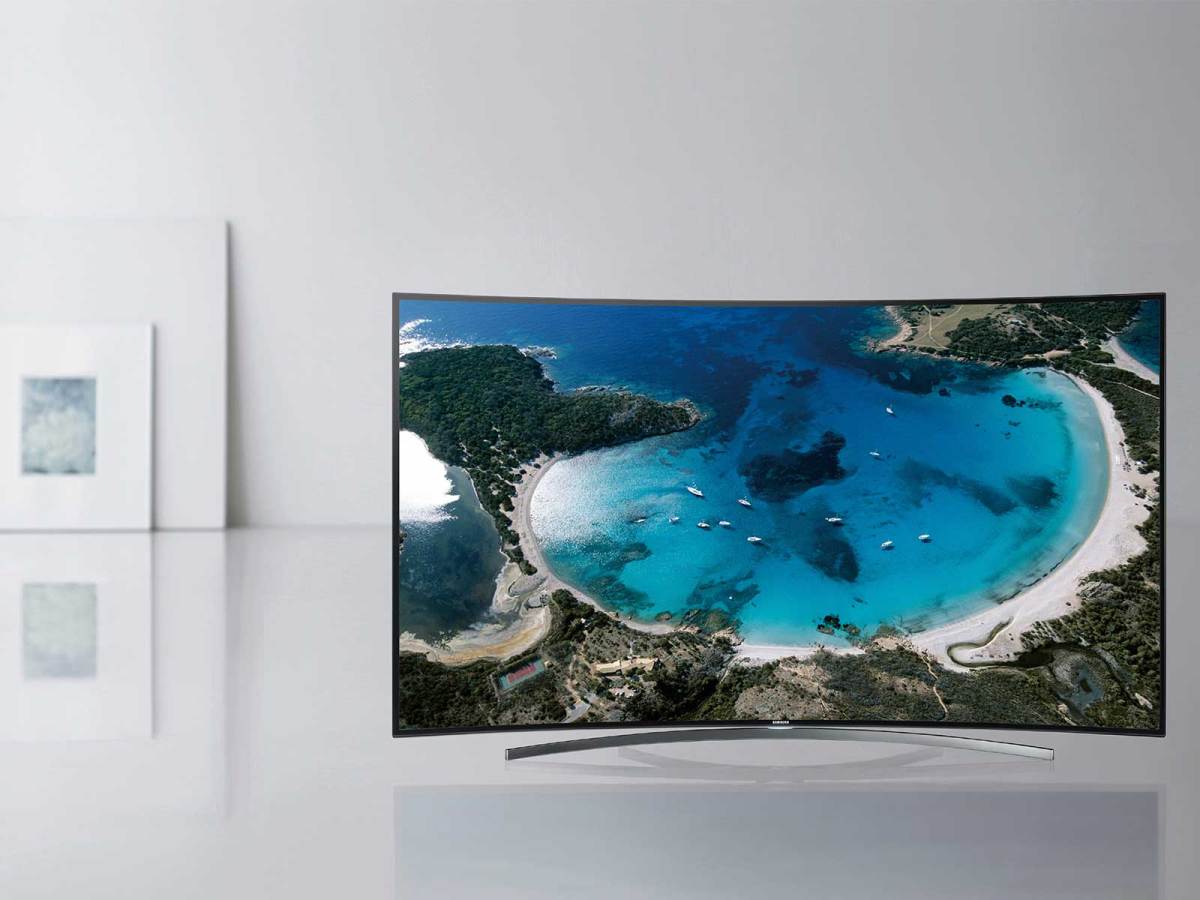
It now seems like a long time ago but it was only 15 months past, at the 2013 International CES, that the Big 4 consumer electronics brands jostled for mindshare in the nascent OLED technology category. OLED panels were everywhere at the show: Samsung and LG had Full HD OLED panels while Sony and Panasonic both unveiled prototype Ultra HD OLED. All four brands convincingly sold OLED to the drooling masses as the future of home entertainment.
Such has been OLED’s decline into obliquity that last night at Samsung’s 2014 gala TV launch, the technology was conspicuous by its absence and various senior Samsung types were avoiding the word like actors saying ‘Macbeth’ in a theatre; it was the Hordern Pavilion, after all.
Phil Newton, Samsung Australia corporate vice president, stood on stage and, in a scene reminiscent of Star Wars, revealed 3D logo holograms denoting the Korean company’s heritage of TV innovation: LED TV, 3D TV, Smart TV, UHD. Even 3D got a run, and that was a disaster for the industry, even 3D!
But no OLED.
Absolutely no-one from Samsung wanted to speak on the record about what the company plans for OLED in the future. “It’s all about Curved and UHD” was the key messaging being spouted at every opportunity. That Samsung has managed to release a Curved LED TV with Ultra HD resolution is a fine achievement. The 55-inch model is RRP $4,999; a crisp $1,000 cheaper than LG’s Curved OLED model, which is only Full HD, even after two significant price slashings.
A very good source in the consumer electronics research industry recently told me that only 2,500 OLED TVs have actually been shipped. This figure was confirmed by a well-placed source at a leading supplier. The original source said Samsung shipped the lion’s share of the 2,500, despite, seemingly, already having quietly withdrawn from the category.
LG is now the only supplier of OLED TVs, and while it has twice attributed a cumulative $6,000 in price cuts to “powerful breakthroughs” that now mean it has “mastered the manufacturing of OLED TV technology”, it is self-evident that if there were strong demand for these models — and, remember, LG has no competition — it wouldn’t be forgoing 50 per cent of the RRP.
Based on Samsung’s deking evasion of any OLED questioning last night, I would wager that we are very unlikely to see that panel technology any time soon, at least until 2015. LG is having its TV launch on Tuesday 6 May 2014 and it would be a shock if it doesn’t pivot to a similar Ultra HD focus. Neither Sony nor Panasonic has an AV launch scheduled; I sent them emails today asking what their plans are and will update this story when I receive a response.
(UPDATE #1: Panasonic Australia’s PR company has responded, saying, “We don’t have any updates for you at this stage. As always, we will definitely keep you informed on any new Panasonic announcements.”
UPDATE #2: Sony Australia’s PR company has responded, saying, “Regarding…OLED, we don’t have any information on that at the moment. There may be some announcements soon around the 2014 range.”)
Even without OLED, Samsung’s range is still deep and impressive. Samsung flew in retailers from all over the country — Nigel Dent from Harvey Norman won the lucky door prize — and the consensus was that this new collection had the power to continue Samsung’s momentum. Newton said during his presentation that Samsung has retained its #1 value share in the TV category for the past seven years and that, in 2013, Samsung was the only company to increase their value in the category. That is a phenomenal statistic when you consider how aggressive growth targets are within most companies.
Samsung is encouraging retailers to showcase Curved and flat Ultra HD panels side-by-side in-store so the consumer can see and experience the difference. While there has been criticism overseas of viewing angles on Curved TVs, this didn’t appear to be a problem while observing the new releases at the launch.
One thing that was noticeable when viewing a lone Curved TV in situ was how unusual it looked when mounted on a flat surface, such as a living room wall. It creates an interesting conundrum that may see a reversion to the golden age of TV watching.
From the dawn of television in the 1950s, when models had enormous rear-ends, the unit was traditionally stationed in the corner of the living area to maximise space. With flat panels predominating in the 2000s, the TV slowly transitioned from the corner to the centre, placed parallel to the wall so as to not create a triangle of wasted room in the corner. Now with Curved panels set to slowly crack the mainstream, the TV might be reverting back to the edges, so to minimise the jutting effect of the curves. All this could be moot, however, if OLED does indeed make a storming comeback, in the form of a bendy TV that can switch from flat to Curved at the touch of a remote.
All in all, Samsung did a pretty good job at convincing that Curved was the future — they certainly reiterated that point at every opportunity — and it was certainly more persuading then when Sony tried to tell us to watch TV at a 6-degree angle. The verdict from influential Perth franchisor and dealer Peter “Kambo” Kambouris made it clear how valued the Korean supplier has become during this period of Japanese stasis:
“Thank God for Samsung,” he said. “And you can print that!”

